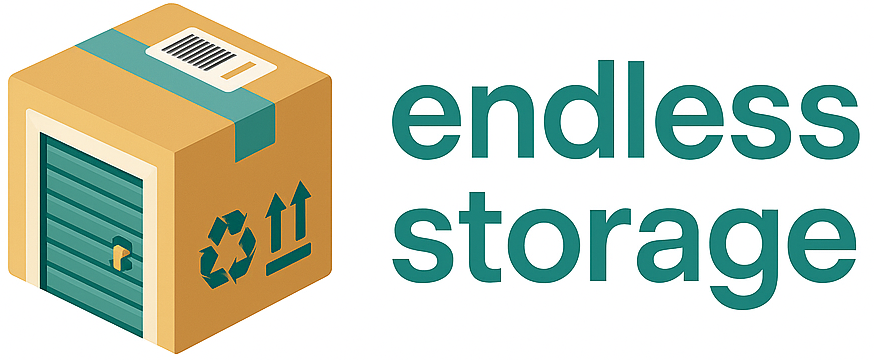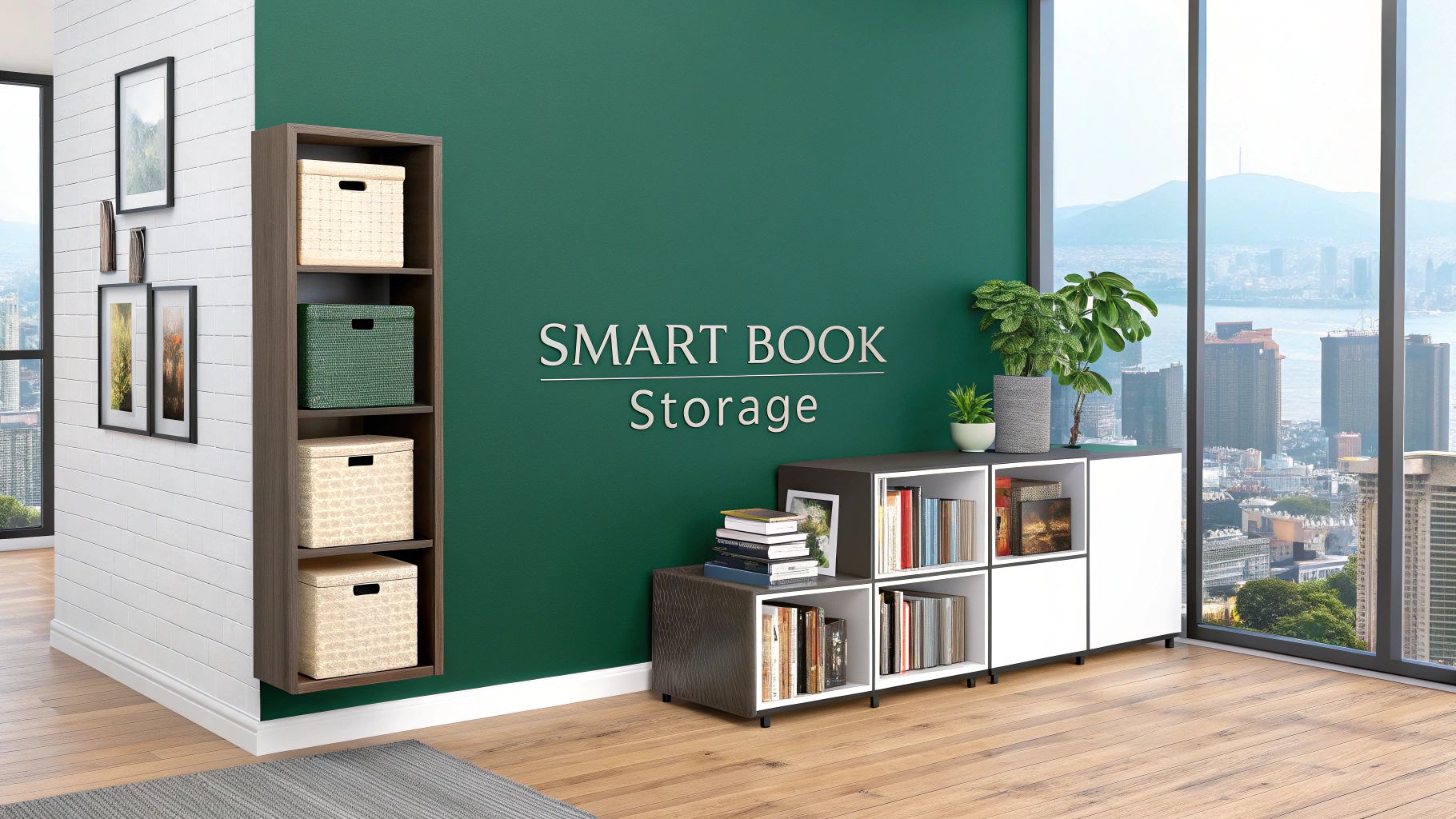In the tight quarters of urban living, a growing book collection can quickly transform from a source of joy into a source of clutter. Every square foot counts, and traditional, sprawling bookshelves are often a luxury we can't afford. But what if you could organize your literary treasures in a way that is not only efficient but also enhances your living space? This guide moves beyond generic advice to explore ten creative and practical book organization ideas designed specifically for the modern reader. We will provide specific, actionable strategies, from systematic library methods adapted for home use to aesthetic arrangements that turn your books into functional art.
This list is built on the principle of making your collection work for you, not against you. To truly reclaim your space and create order, exploring general ways to maximise bedroom storage can offer versatile solutions adaptable for your books. More importantly, we'll address the ultimate space-saving challenge: what to do when your collection outgrows your home. We'll introduce a hybrid approach that combines smart in-home organization with the flexibility of on-demand storage, ensuring you can keep every book you love without sacrificing precious living area. Prepare to transform your literary chaos into a beautifully curated and accessible library.
1. Dewey Decimal System for Home Libraries
For the reader who values structure and logic, adapting the Dewey Decimal System is one of the most effective book organization ideas available. This is the same classification system used by public libraries worldwide, which organizes nonfiction books by subject matter using a numerical system. It offers a scalable and intuitive way to arrange a diverse collection, ensuring you can always find exactly what you need.
The system is built on a clear hierarchy. All knowledge is divided into 10 main classes, such as 000s for Computer Science, Information & General Works, 500s for Science, and 800s for Literature. Each main class is then broken down into more specific divisions and sections, creating a logical flow from general to specific.
How It Works for You
Instead of memorizing the entire system, you can adopt its core principles for your personal library. Start by grouping your books into broad categories that align with the 10 main classes. You don't need to be precise with the exact numerical codes unless you want to be; the goal is to group by subject.
This method is ideal for those with large, varied collections, especially nonfiction enthusiasts, researchers, and lifelong learners. By organizing by subject, you can easily browse related topics together, which can foster new connections and discoveries right on your own shelves.
The following infographic illustrates the basic hierarchical structure of the system, showing how it branches from broad classes to specific subjects.
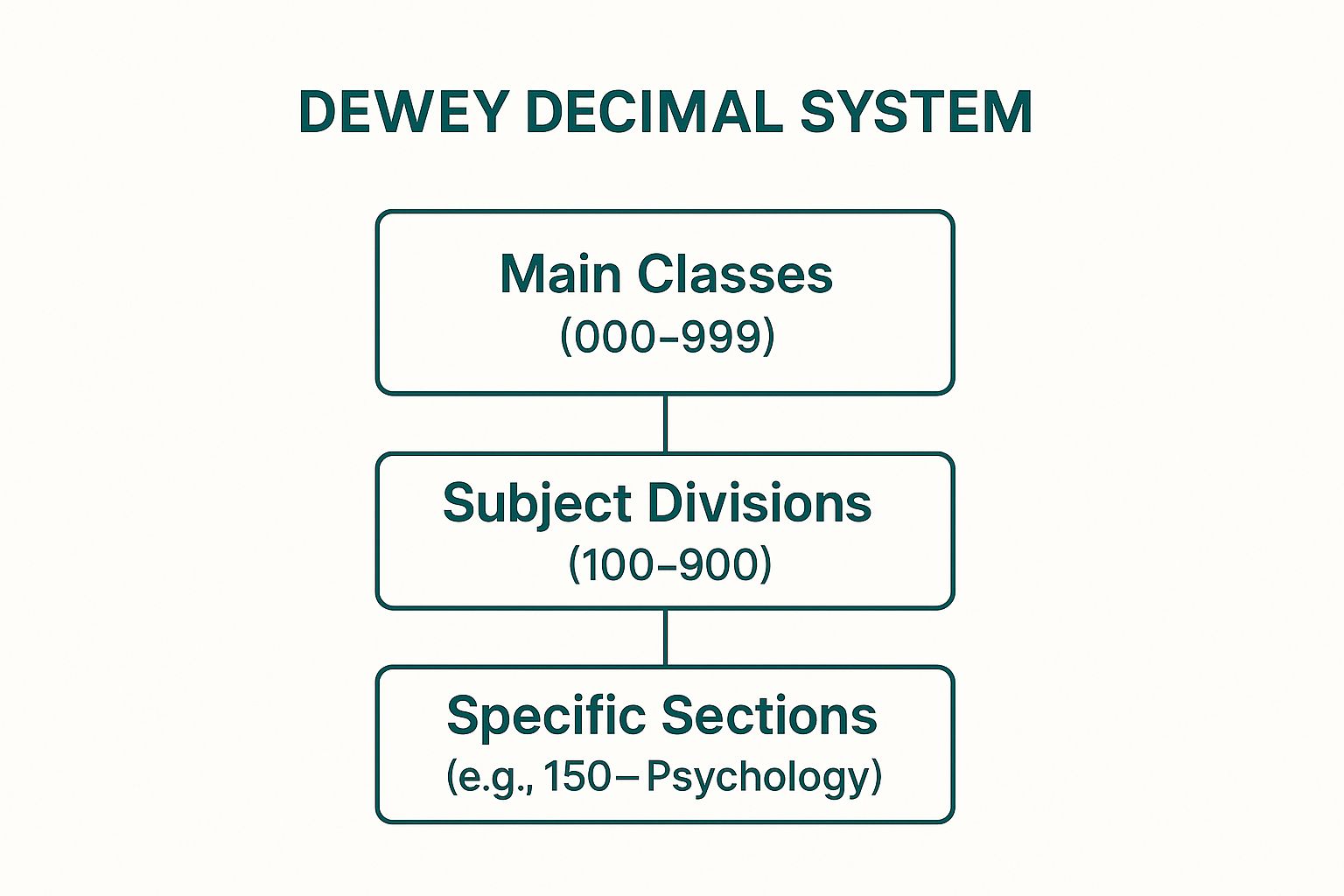
This visualization highlights how the system logically funnels from the ten Main Classes (000-999) into more defined Subject Divisions, and finally into highly specific sections like Psychology (150).
2. Genre-Based Organization
For the mood reader who selects books based on what they feel like reading, genre-based grouping is one of the most intuitive book organization ideas. Popularized by major bookstore chains like Barnes & Noble, this method involves arranging your collection by literary categories like mystery, science fiction, biography, or romance. It’s a straightforward system that makes it easy to find a book that fits your current craving.
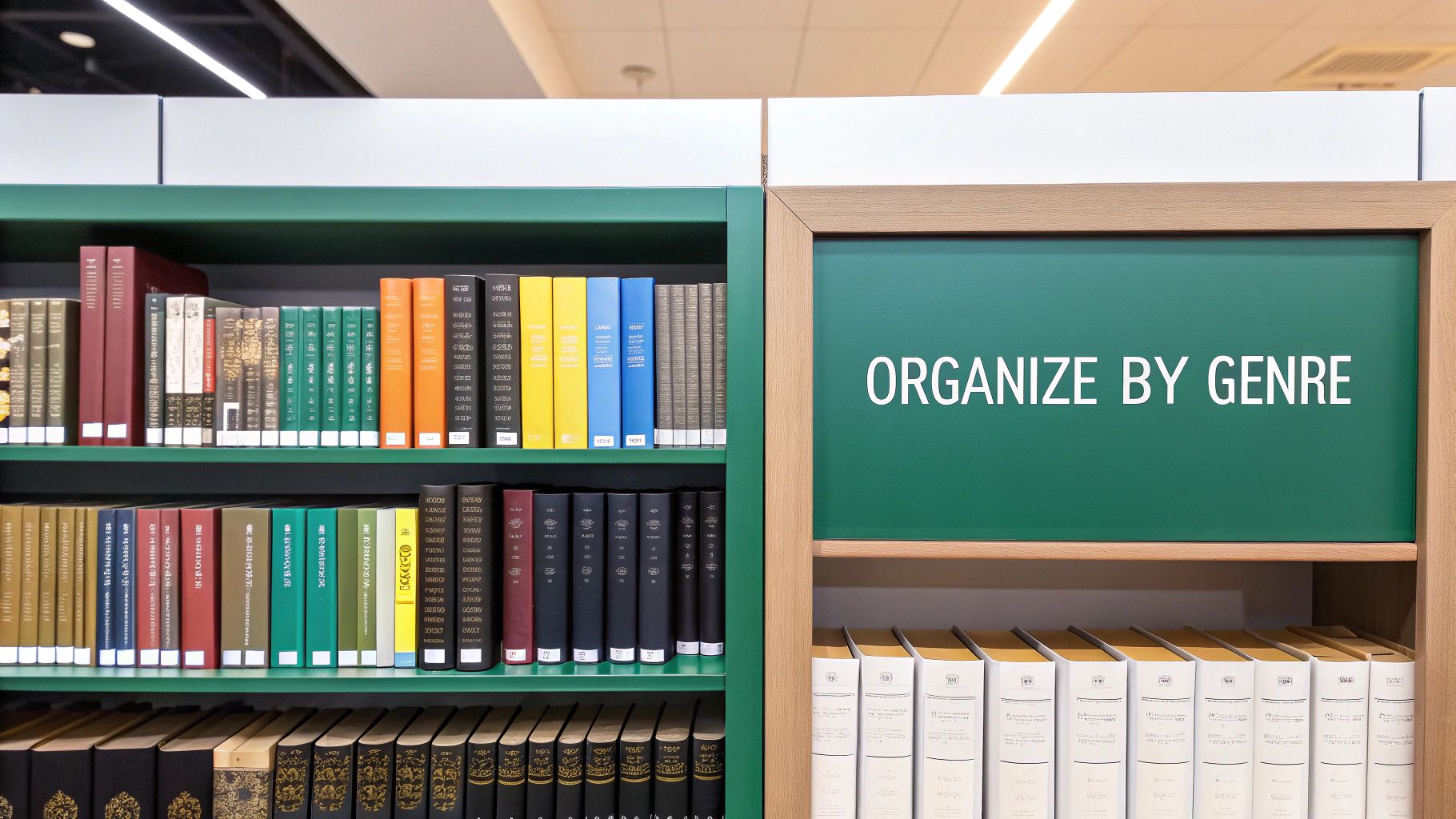
The system works by creating dedicated sections on your shelves for each genre. Within these categories, books are typically organized alphabetically by the author's last name. This creates a browsable, bookstore-like experience right in your own home, perfect for rediscovering old favorites or picking out your next adventure.
How It Works for You
To implement this, start by sorting your books into piles based on their primary genre. You can use shelf dividers or simple, elegant labels to clearly mark where each genre begins and ends. Don't worry about being perfect; create a "Miscellaneous" or "Mixed Genre" section for books that defy easy classification, such as literary fiction that blends multiple styles.
This method is ideal for readers who have diverse tastes but tend to read within specific categories at a time. By grouping similar books together, you can easily compare titles within a genre you love. Consider keeping series together within their genre section to maintain narrative continuity, ensuring you always grab the next book in order.
3. Color-Coded Organization
For the visually-minded reader, organizing by color is one of the most aesthetically pleasing book organization ideas to transform your shelves into a work of art. This method arranges books according to the dominant color of their spines, creating a stunning rainbow effect that serves as a bold decorative statement. It prioritizes form over function, making your book collection a focal point of your interior design.

Popularized by interior designers and social media platforms like Pinterest and BookTok, this system turns a standard bookshelf into a vibrant, curated display. The system is simple: group books with similar spine colors together, then arrange those groups in a sequence that you find appealing, such as the order of the rainbow (ROYGBIV).
How It Works for You
This method is perfect for those who remember books by their visual appearance rather than by author or title. It’s an excellent choice for design-focused individuals living in small apartments or urban spaces, as it injects personality and order into a room without requiring complex systems. While critics argue it makes finding specific books difficult, a simple digital catalog or taking photos of your shelves can solve this.
The key is to embrace the visual flow. You can create solid blocks of color or a more gradual gradient effect. This approach is ideal for collections where the aesthetic impact is just as important as the content within the books. It's less about quick retrieval and more about creating an environment that feels inspiring and uniquely you.
4. Alphabetical by Author (Library Style)
For readers who prioritize finding a specific book quickly, organizing alphabetically by author's last name is one of the most reliable book organization ideas. This classic, library-style system is intuitive and universally understood, making it incredibly simple to implement and maintain. It transforms your shelves into a personal index where any title can be located in moments.
The system is straightforward: arrange all your books in alphabetical order based on the author's surname. Typically, fiction and nonfiction are separated first, with each section then following its own strict A-to-Z order. This method, popularized by library science professionals, brings a familiar sense of order to any collection.
How It Works for You
To implement this, simply sort your books by the author's last name. For authors with multiple books, arrange their titles alphabetically or by publication date to keep series in order. This approach is perfect for literature lovers and anyone who thinks of their books by who wrote them, rather than by subject or color.
Its primary strength is ease of retrieval. You no longer have to guess where you put a specific novel; you just head to the corresponding letter. This makes it an excellent choice for those who frequently lend books or simply want a no-fuss system that works without complex rules.
Pro Tip: For large collections, consider creating subdivisions for common letters. For example, break up "S" into "Sa-Sh" and "Si-Sz" to make browsing even faster and more manageable on crowded shelves.
This method’s familiarity and efficiency are key. For more guidance on arranging your collection, you can learn more about how to organize your books.
5. Size and Height Arrangement
For those who prioritize aesthetics and visual order, arranging books by size and height is one of the most striking book organization ideas. This method focuses on the physical dimensions of your books, grouping them by height and sometimes depth to create clean, uniform lines on your shelves. It transforms your collection into a deliberate architectural element, lending a sense of calm and tidiness to any room.
Popularized by minimalist designers and the Scandinavian interior design movement, this approach treats books as objects of decor. It’s particularly effective in small apartments and modern living spaces where visual clutter can be overwhelming. The result is a bookshelf that looks intentionally curated and exceptionally neat, maximizing the visual impact of your collection.
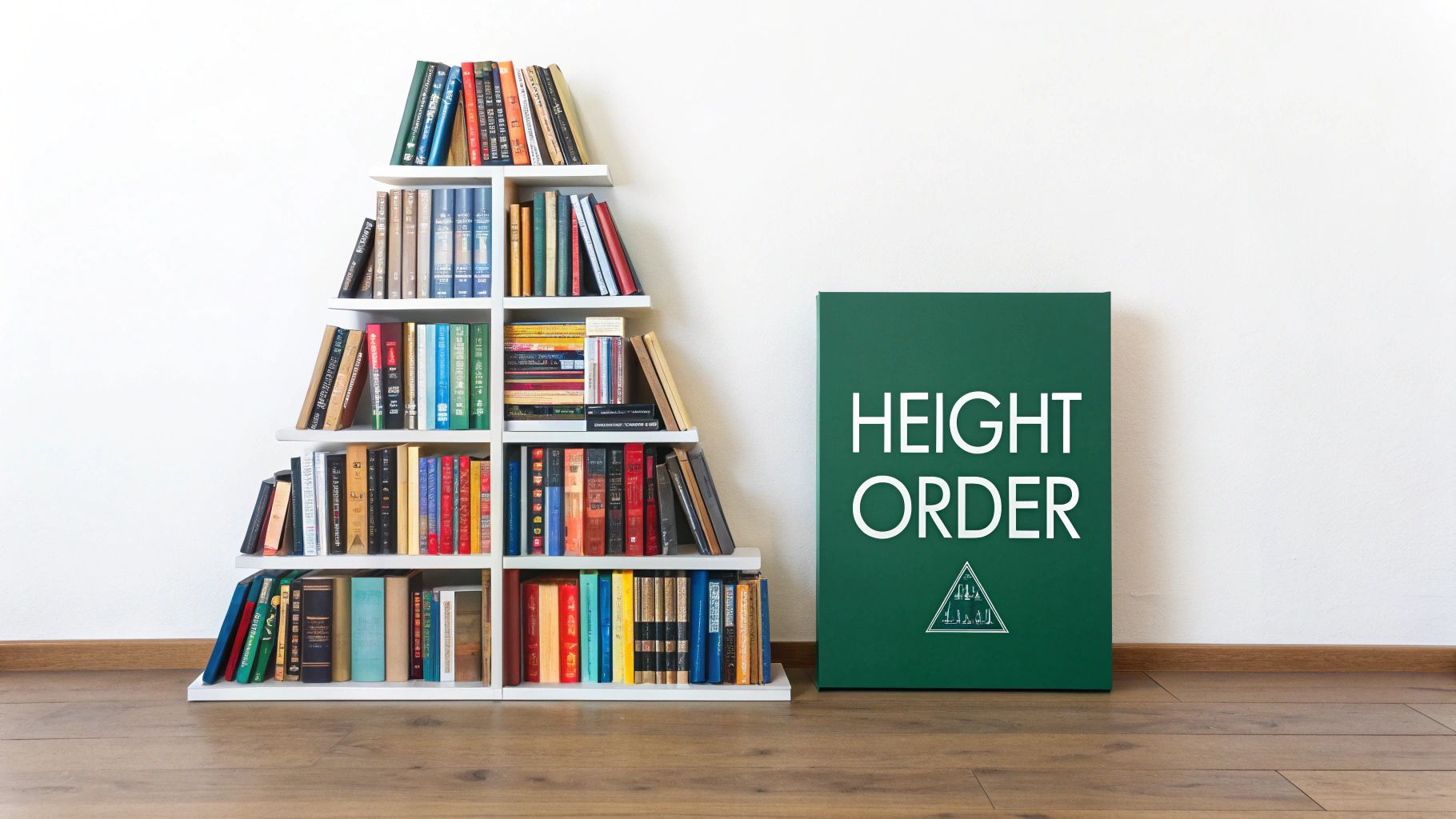
How It Works for You
To implement this system, begin by sorting your books into distinct height categories: small paperbacks, standard trade paperbacks, and larger hardcovers or art books. Place each size group together on your shelves, arranging them from tallest to shortest or vice versa to create a pleasing gradient. Stacking some books horizontally can also break up the monotony and fill awkward gaps.
This method is perfect for readers who value form as much as function and want their library to enhance their home’s decor. While it separates books by subject, you can maintain organization by creating a simple digital catalog or spreadsheet to track where specific titles are located. For insights on how this technique impacts long-term storage and preservation, you can learn more about the best ways to store books at Endless Storage.
6. Chronological by Publication Date
For the reader fascinated by history and the evolution of ideas, arranging books chronologically is one of the most intellectually rewarding book organization ideas. This method organizes your collection based on the original publication date of each work, creating a tangible timeline on your shelves. It allows you to trace the development of literary movements, scientific thought, or cultural shifts, turning your library into a historical narrative.
This system offers a unique perspective, showcasing how authors and ideas influenced one another over time. You can apply it to your entire collection for a broad historical sweep or within specific genres, such as arranging all your science fiction from its early pulp origins to modern-day epics. This method transforms simple book storage into an exploration of context and progression.
How It Works for You
To implement this system, focus on the original publication date, not the date of the edition you own. For larger collections, it can be helpful to create broader groupings by decade or historical era (e.g., "The Victorians," "The Modernists," "Post-War Fiction") to make browsing easier. Adding small, discreet labels to shelves indicating the date range can also enhance navigation. For a deeper dive into ordering your books by publication, this Chronological Order guide offers valuable insights.
This approach is perfect for history buffs, literature students, and anyone who appreciates the context behind the books they read. It provides a visual representation of how conversations between books and authors have unfolded through the ages, enriching your understanding and appreciation of your collection.
7. Frequency of Use System
For the practical reader whose library is in constant use, the Frequency of Use System is one of the most intuitive book organization ideas to implement. Popularized by productivity experts, this method prioritizes accessibility over strict categorization. It organizes books based on how often you reach for them, ensuring your most-loved or currently-needed volumes are always within arm's reach.
This system is built on ergonomic principles, placing frequently accessed books at eye level and in prime locations, like a nightstand or home office desk. Less-read books, such as old textbooks or sentimental favorites, are stored in less convenient spots, such as higher shelves or in secondary storage.
How It Works for You
To implement this method, start by identifying your most-used books. These could be your "currently reading" pile, essential reference guides for work, or favorite cookbooks. Place these in the most accessible spot on your shelves. Books you access occasionally can go on middle shelves, while those you rarely touch can be placed on the top or bottom shelves.
This approach is perfect for avid readers, students, and professionals who interact with their books daily. It streamlines your reading habits and workflow by eliminating the friction of searching for a needed volume. For those looking to optimize their space further, this system pairs well with decluttering. You can explore a detailed decluttering guide on endless-storage.com to help identify which books can be moved to deeper storage.
8. Series and Collection Grouping
For readers who cherish the continuity of a good story, grouping books by series and author collections is one of the most satisfying book organization ideas. This method prioritizes keeping related works together, making it incredibly simple to follow a narrative arc or dive into the complete works of a favorite author. It’s a visual and practical system that honors the connections between books.
This approach is especially popular with fans of fantasy, science fiction, and young adult literature, where multi-book series are the norm. Instead of scattering volumes alphabetically or by color, you create dedicated zones for each series or author, preserving their integrity as a complete unit. This ensures you can easily grab the next book in a series without a frustrating search.
How It Works for You
Start by identifying all your book series, trilogies, and author collections. Designate a specific shelf or section for these groupings. For instance, you could have one shelf for your Harry Potter series, another for your collection of Stephen King novels, and a third for your graphic novels. This creates a logical and reader-friendly library where everything has a home.
This method is perfect for genre fiction lovers and dedicated collectors who want to see their sets displayed together. It also simplifies finding a specific book within a beloved series. Using distinct shelf dividers or labels can further enhance organization, clearly separating one collection from the next. For larger collections that may need to be stored, proper labeling is key. To explore effective labeling strategies, you can learn more about the best way to label storage bins.
To make long series even more accessible, consider these tips:
- Use shelf dividers: Place dividers between different series or author collections to create clear visual breaks.
- Number the spines: For very long series, a small, removable numbered sticker on each spine can help you keep them in perfect order.
- Separate incomplete series: Create a designated "in-progress" section for series you are still collecting. This prevents gaps on your main shelves and serves as a visual to-do list.
9. Mood and Emotional Categorization
For the reader who chooses books based on feeling, organizing by mood is one of the most personal and intuitive book organization ideas available. This reader-centric approach prioritizes the emotional experience a book provides over traditional metrics like author or genre. It transforms your bookshelf into a toolkit for your mind, allowing you to easily find the perfect read for your current emotional state.
This system groups books into categories like "comfort reads," "mind-bending thrillers," "uplifting stories," or "intellectual challenges." The categories are entirely subjective and created by you, for you. It reflects a growing trend, popularized by bibliotherapy practitioners and mindful reading advocates, that treats reading as an act of self-care and personal wellness.
How It Works for You
To implement this system, start by creating broad emotional categories that resonate with you. Think about why you turn to books: is it for escape, comfort, inspiration, or a good cry? You can use color-coded stickers or custom shelf labels to designate each mood section. A single book might even fit into multiple categories, reflecting its emotional complexity.
This method is ideal for readers who see their library as a source of therapeutic or mindful engagement. By organizing books based on the feelings they evoke, you can quickly select a title that matches your needs, whether you're seeking a lighthearted escape after a tough day or a thought-provoking narrative to spark new ideas. This approach makes your collection not just organized, but deeply attuned to your personal well-being.
10. Hybrid Multi-System Approach
For the reader whose collection defies a single rule, the Hybrid Multi-System Approach is one of the most practical and personalized book organization ideas. This method allows you to combine different organizational systems across your shelves to suit the unique needs of various book types. It acknowledges that what works for fiction might not be ideal for non-fiction or your most-used reference books.
The system is built on flexibility. Instead of forcing your entire library into one rigid structure, you create distinct zones, each with its own logic. For example, your fiction novels could be arranged alphabetically by author, while your non-fiction collection is grouped by subject. A special, easily accessible shelf could hold your "to-be-read" pile or current favorites, organized simply by a 'first-in, first-out' method.
How It Works for You
To implement this, first assess the different types of books you own. You might create separate sections for fiction, non-fiction, poetry, and work-related manuals. Within each section, apply the system that makes the most sense: alphabetical for authors you love, chronological for history books, or even color-coded for your art and design collection.
This method is perfect for readers with diverse libraries, families sharing shelf space, or anyone who finds that a one-size-fits-all approach just doesn't work. By tailoring the organization to the content, you create an intuitive system that adapts to you, not the other way around. Clear labeling for each section can help everyone in the household navigate the shelves effortlessly. This is just one of many storage organization ideas that can bring order to a varied collection.
Top 10 Book Organization Methods Compared
Extending Your Library Beyond Your Walls
Transforming your personal book collection from a source of clutter into a well-ordered, functional, and beautiful part of your home is a deeply rewarding endeavor. Throughout this guide, we've explored a diverse range of book organization ideas, from the classic precision of the Dewey Decimal System and alphabetical sorting to the creative freedom of arranging by color or mood. Each method offers a unique lens through which to view and interact with your library, catering to different personalities, collection sizes, and aesthetic goals.
Synthesizing Your Personal Library System
The most crucial takeaway is that there is no single "correct" way to organize your books. The ideal approach is one that aligns with how you think, how you use your books, and the physical constraints of your living space.
- For the Pragmatist: Systems like organizing by frequency of use or alphabetically by author prioritize function and accessibility above all else.
- For the Visual Thinker: A color-coded or size-based arrangement turns your collection into an intentional piece of interior design.
- For the Story-Driven Reader: Grouping by genre, series, or even chronological publication date allows you to trace narrative threads and historical context right on your shelves.
The true mastery of book organization often lies in creating a hybrid system. You might choose to arrange your main bookshelf by genre but alphabetize authors within each section. Perhaps your fiction is color-coded for visual appeal, while your non-fiction is sorted by subject for easy reference. This personalized strategy ensures your home library is both a joy to behold and a breeze to navigate.
Beyond the Shelf: A Modern Approach for Urban Collectors
As we discussed, even the most ingenious organization can't create more physical space. For the passionate reader in a small apartment or home, the ultimate challenge is accommodating a growing collection. This is where modern solutions become an essential part of your organizational toolkit. Rather than forcing a difficult purge of cherished volumes, consider a strategic split between your active and archival collections.
Books you treasure but don't need immediate access to, like completed series, academic texts, or sentimental favorites, can be safely stored off-site. When your collection outgrows your current space, or you need temporary safekeeping for your literary treasures, exploring professional storage solutions can be an ideal extension of your library management strategy. This allows you to maintain a curated, accessible library at home that reflects your current reading habits, while ensuring the rest of your beloved books are protected for the future. Embracing this two-part approach empowers you to be an ambitious collector without sacrificing a minimalist, well-organized living environment.
Ready to reclaim your living space without parting with your books? Endless Storage offers the perfect solution by providing a "bookshelf in the cloud" for your archival collection. Visit Endless Storage to see how on-demand, by-the-box storage can help you implement the ultimate book organization ideas for a clutter-free home.
Frequently Asked Questions
Unveiling the Secrets to Effortless Storage
Endless Storage is available nationwide. You pick a plan, tell us where to pickup, and we'll send a UPS van to collect, whichever state you're in.
Your shipping label will be sent to your email within a few minutes, if not instantaneously. It can also be accessed through your customer profile.
Your box will be shipped to one of our climate controlled self storage facilities in our closest self storage facility. Our manager will accept your package, notify you that your box has been received, and securely stored. Only our managers will have access to Endless Storage boxes.
Email us at admin@endless-storage.com click to live chat with us, or send us a message below.
Never! We're committed to transparent pricing with no surprises. You'll lock in your rate with no hidden fees and no long-term contracts.
Fast access guaranteed! Your boxes will arrive at your doorstep within 48 hours of requesting them back. Need to check on delivery? We provide tracking information for complete peace of mind.
Totally flexible! Store month-to-month with no long-term commitment and cancel anytime.
Everything's online! Use your account dashboard to:
• Set up automatic monthly payments
• Request box returns
• Update your address
• Order additional boxes
• Track shipments
Your boxes are insured up to $100 each. Our customer service team will help you file any necessary claims and resolve issues quickly.
Don't worry – we'll email you right away if there's a payment issue. Your items stay safe, though you may have temporary service interruption or late fees until payment is resolved.
When you request our free storage kits, you'll have 30 days to send in your boxes to activate your 3 months of free storage. Think of it like starting a gym membership – your activation window begins when you receive your kits, and your full free trial begins once you send in your first box. During your free months, you'll experience our complete storage service at no cost.
Your 30-day activation window begins when you receive your storage kits. We'll send you an email confirmation when your kits are delivered, marking the start of your activation period.
If you haven't sent any boxes for storage within your 30-day activation window, your free trial will expire and we'll begin charging the regular monthly rate of $9.99 per box. This helps ensure our storage kits go to customers who are ready to use our service.
A box costs $9.99 per month to store (plus sales tax). This price includes free shipping for standard boxes under 50 lbs. and smaller than 16"x16"x16"
Log into your Endless Storage account, locate the box you would like returned, and simply click Return My Box.
Yes, each box stored with us is insured for up to $100 throughout transit as well as the duration of storage within our facilities.
Your box will be at your doorstep within 48 hours of you requesting it back.
Store 10+ boxes? We'll pick them up for free! After your purchase, we'll contact you to schedule a convenient pickup time and arrange UPS collection.
We trust UPS with all shipments, and every box includes $100 insurance coverage. You'll receive tracking information to monitor your items' journey.
Yes! Visit any of our locations by appointment. Just bring a photo ID matching your customer profile.
For everyone's safety, we can't store hazardous materials, firearms, or perishables. All items must fit within our standard boxes.
It's easy! Order your storage kit online, and we'll ship it to you within 1-2 business days. Your shipping labels will be emailed instantly and available in your account.
We're here to help! Email us at admin@endless-storage.com, use our live chat, or send us a message through your account.
To cancel your storage service with Endless Storage, please email your cancellation request to admin@endless-storage.com. Our team will process your request within 2 business days and confirm your cancellation via email.
We understand packing takes time. However, to maintain your free trial benefits, you'll need to send at least one box within the 30-day activation window. If you need more time, you can always start with one box to activate your trial and send the rest later. You can always reach out to admin@endless-storage.com if you have any issues or concerns.
When you request our free storage kits, you're starting a 30-day window to begin using our storage service.
To avoid any charges, simply send at least one box for storage within 30 days to activate your 3-month free trial. If you decide not to use our service and don't send any boxes within the 30-day window, a one-time $50 fee will apply to cover the costs of materials and shipping. This helps ensure our storage kits go to customers who are ready to use our service.
Think of it like reserving a hotel room – we're setting aside space and sending specialized packing materials for your use. The fee only applies if you request materials but don't begin storage, similar to a hotel's no-show charge.
